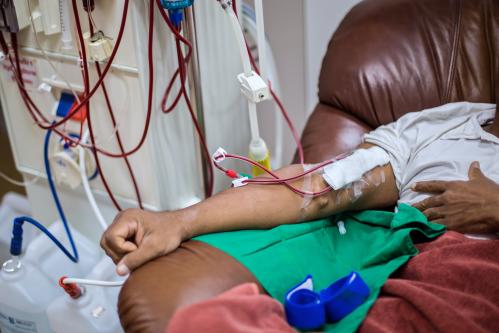Americans are frustrated with the unaffordability of health insurance, the effectiveness of health care, and the rising number of uninsured. One important contribution to all of these challenges is the increased insulation of Americans from the cost of their care. In 1965, roughly half of health-care expenses were paid out of pocket by patients; by 2006, that figure had declined to just 13 percent—lower than the average of other high-income OECD countries.
One-size-fits-all high deductible policies associated with Health Savings Accounts (HSAs) require costly tax breaks for the most affluent while unnecessarily increasing financial and health risks for low- and moderate-income families. Instead, any expansions of cost sharing should be based on the evidence, chiefly the RAND Health Insurance Experiment and subsequent research. The RAND experiment found that cost sharing, if related to a family’s income, could reduce health spending by an average of 31 percent without any worse health outcomes. Subsequent research finds that the savings could be even greater.
This paper proposes a template for a progressive cost sharing plan that would require typical families to pay half of their health costs until they reached 7.5 percent of their income; low-income families would not have any cost sharing. The analysis shows that this template could reduce total health spending by 13 to 30 percent, reducing premiums by 22 to 34 percent without hurting health outcomes. Moreover, low- and moderate-income families would face less cost sharing than they do under typical plans today while the premium savings would be more than enough to compensate middle- and upper-income families for the modest increase in their exposure to small risks. Every family would have an affordable limit on their out-of-pocket payments, in contrast to the situation today, where many families have insurance policies that expose them to unlimited cost sharing. In addition, the paper suggests the potential inclusion of evidence-based exceptions for highly valuable preventive care and chronic disease treatments as well as other mechanisms to protect the chronically ill.
The Brookings Institution is committed to quality, independence, and impact.
We are supported by a diverse array of funders. In line with our values and policies, each Brookings publication represents the sole views of its author(s).



